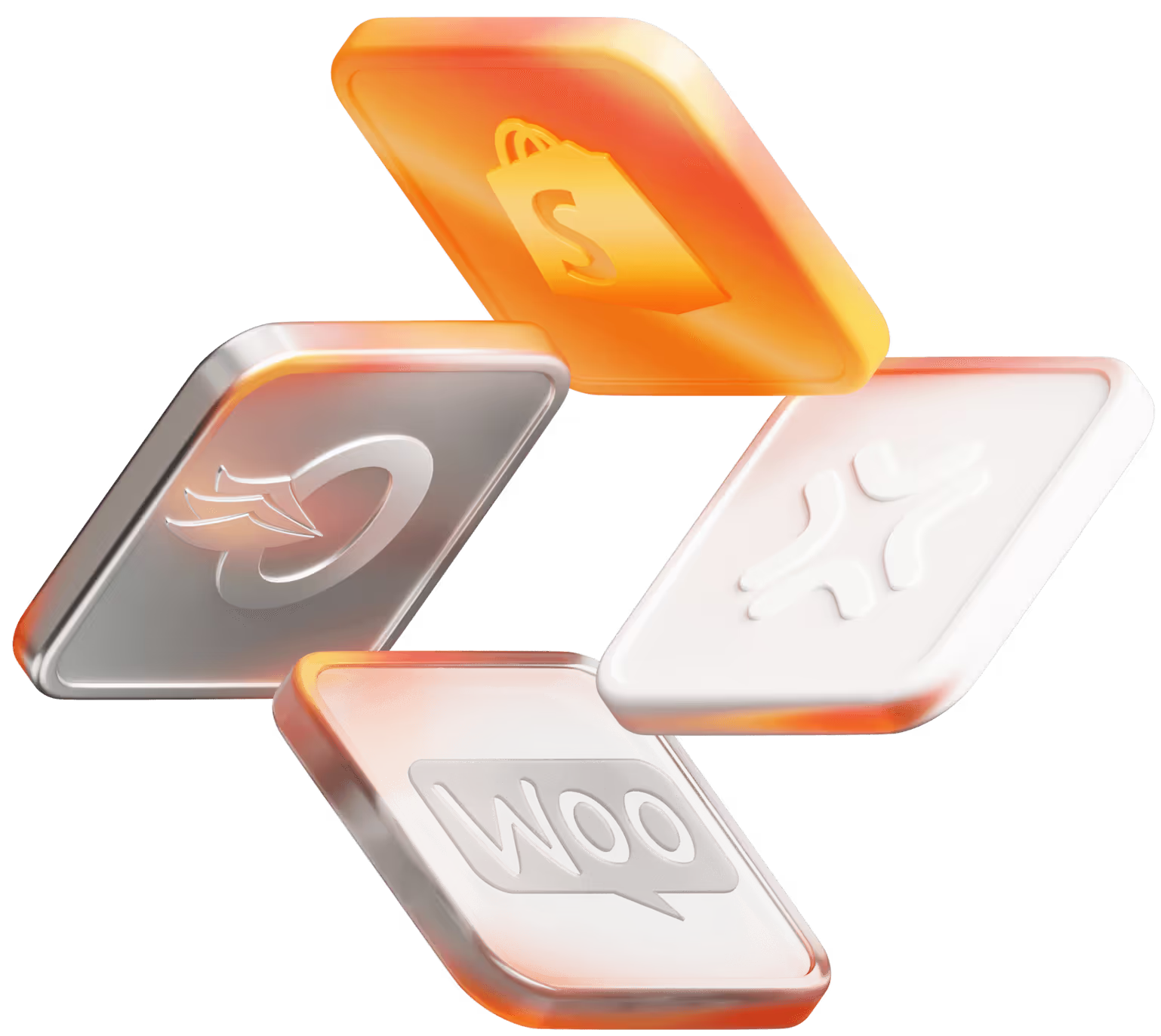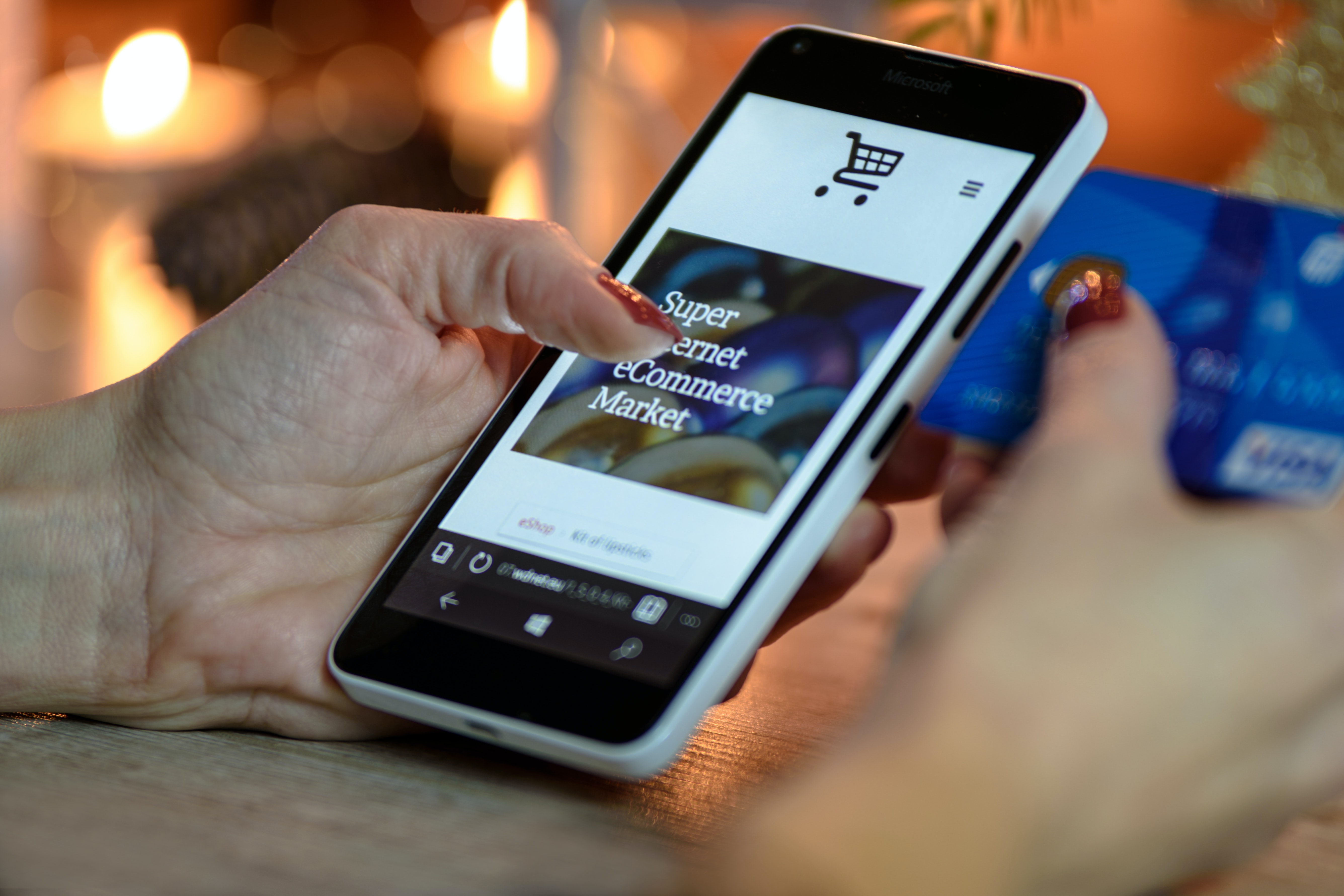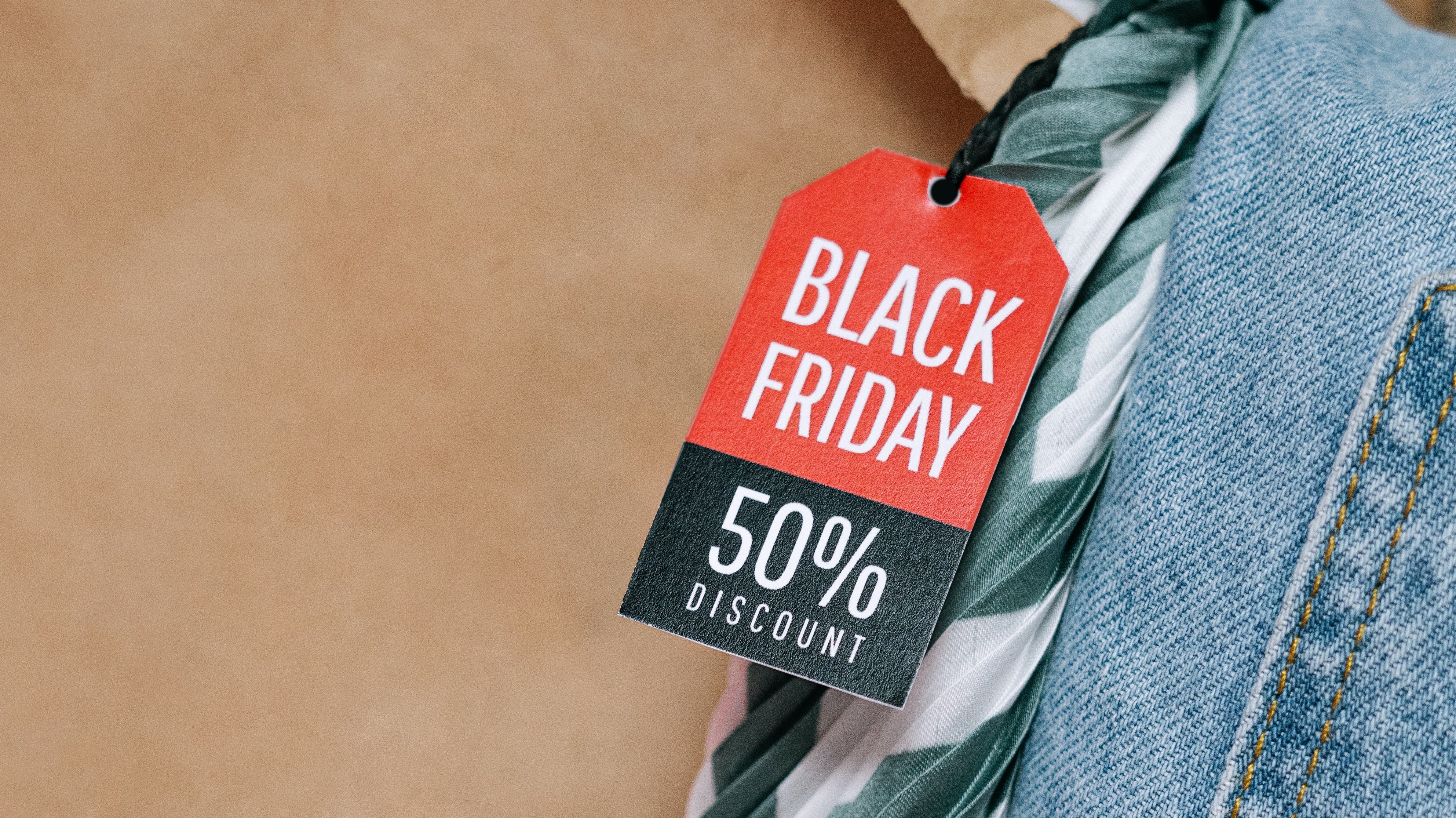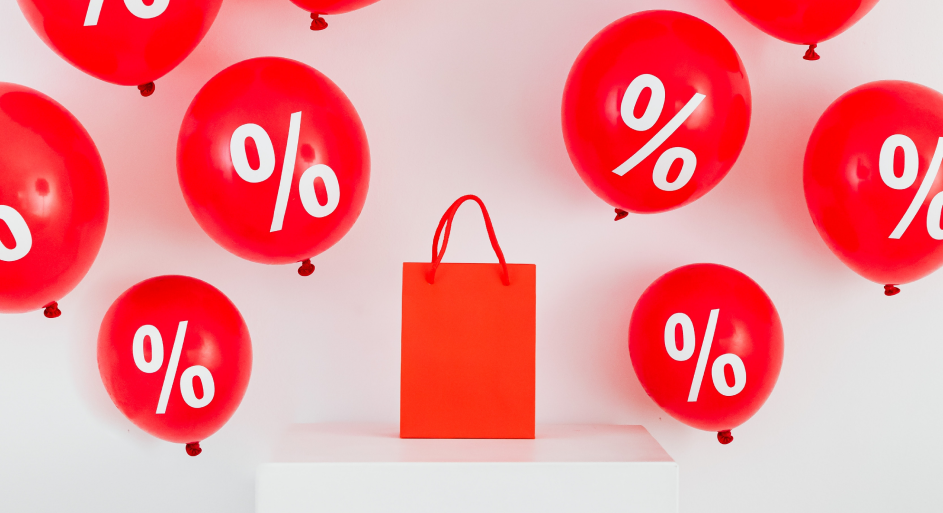17 Trends, die den E-Commerce im Jahr 2023 verändern werden
These e-commerce trends are the ones to watch in 2023 if you want to stay competitive. From UGC marketing to strengthening your supply chain, these trends will transform e-commerce this year.
.png)
Trends allow your business to break the boundaries of your market, pursue new ideas and explore fresh opportunities. The world of e-commerce is fast-paced and ever changing, with new trends emerging rapidly.
Equally, the state of the world economy means that you need to have diverse sales channels and proof of value in mind because they are super important to customers. Customer retention is crucial in the current climate. That's why you need to make the experience for your customers as smooth as possible. Tracking current trends can help.
To keep your enterprise competitive, here are some e-commerce trends to watch in 2023.
1. Omnichannel selling
Omnichannel selling exploded last year, proving to be one of the top e-commerce trends of 2022. The tactic of multichannel selling is set to spread in 2023. According to Gilles Couvrer, the founder of Crosslist, 'retailers who take an omnichannel approach - i.e. selling through more than one sales channel - will increase their revenue by over 190% on average'.
One of the hotly anticipated e-commerce trends of 2023 is a surge in the number of businesses taking their products to online marketplaces. Why? Because according to consumer research by ESW, nearly 90% of consumers expect brands to offer an omnichannel experience.
Brands using at least three sales channels, for example social media, online store and in-store, stand to see a 287% higher purchase rate compared to single-channel brands.

2. Even more mobile shopping
This e-commerce trend for 2023 is no surprise. Research by Coupofy reveals that mobile commerce is growing 300% faster than traditional e-commerce. If your online store is not optimized for mobile, you are missing out on huge revenue opportunities.
The mobile shopping trend is set to see even greater growth in 2023. Recent research from ReadyCloud shows that 72.9% of e-commerce purchases are now made through mobile devices. Plus, 72% use their mobile phone to research products before buying, according to V12.
The VP of Online Stores at Wix, Oren Inditzky, predicts that in the USA alone mobile commerce (m-commerce) will account for 44.2% of all e-commerce sales in 2023.
3. In-app social media shopping
More e-commerce platforms are integrating advanced features that are accessible to everyone. This, combined with the explosive adoption of social media, which empowers any brand to build recognition and awareness, has led to a surge in the number of micro brands emerging.
This trend will continue to drive the influence of social media apps on consumer shopping habits as more e-commerce capabilities are added that enable shoppers to buy items without ever leaving their social media apps.
Instagram has its own dedicated shopping feature, Facebook offers storefronts to businesses, while TikTok has livestream shopping capabilities and gives merchants the ability to integrate an entire catalog.
Such features are expected to drive up the value of social shopping to $101.1 billion in 2023. Now's the time to review your social media channels to find ways to maximize audience engagement and sales opportunities.

4. User-generated content (UGC) will be at the core of digital marketing
With influencer marketing becoming increasingly expensive, big things are expected of user-generated content (UGC) in 2023. Consumers have grown tired of influencer-led marketing, and instead want to see themselves using products.
Research by Retail Gazette compared the number of minutes people spent watching Netflix - estimated to be 9.6 trillion, compared with the minutes spent watching TikTok - estimated to be 22.6 trillion. From this, they came to the conclusion that most of the content that is consumed globally is user-generated content.
Consumers are looking for 'authentic' content, in which they can see themselves as the user of a specific product or a brand ambassador. If you want your social ads to succeed in 2023, you need to use UGC.
5. TikTok and Instagram search is becoming increasingly important
Nearly 40% of Gen Z consumers prefer to search for items on TikTok and Instagram over Google, according to Google's own research. In 2022, TikTok launched 'infinite loop', which the platform describes as the 'retail path to purchase' and where 'entertainment and commerce intersect'.
TikTok's infinite loop is designed to disrupt the traditional marketing funnel. A study conducted by the social media platform found that customer journeys very rarely follow a straight line, which means that the traditional marketing funnel is less relevant to the modern shopping experiences.
Instead of following a funnel process, consumers now seemingly exit and re-enter the buying process multiple times via an infinite loop that has no beginning or end point - and it's entertaining content that is powering TikTok's infinite loop, entire communities on the app are driving brand engagement and transforming shopping experiences.
A statement by TikTok explains that: "By listening to the TikTok community, we meet users where they want to be met, and it’s not in the funnel. Rather, it is an infinite loop with no start or end point, and it empowers brands to establish more meaningful relationships with consumers that result in communities of brand loyalists, repeat purchases, and greater spending.”
TikTok boldly proclaims that e-commerce is no longer 'the future of shopping, it is shopping', and has adapted its search feature to enable users to do product and brand research using its infinite loop model - as result 44% of TikTok users say that the app is great for discovering something new.
Instagram has also adopted a similar strategy. The impact of TikTok and Instagram search has since forced Google to rethink how the next generation audience is consuming content and shopping online.
With TikTok and Instagram search playing a more prominent role in buying decisions, this e-commerce trend will last throughout 2023 and beyond. You need to get your brand on these platforms and ask users to review your products.

6. Live shopping
The increasing popularity of live commerce has been astronomical given that very few businesses were even thinking about it a few years ago. However, live shopping sales will account for 20% of all e-commerce sales as soon as 2026.
Gen Z shoppers especially have been a huge driving force behind the growth in live shopping because they want the brands they love to be more digitally innovative, and because they want a more convenient shopping experience. Live shopping enables consumers to engage with sellers in real-time, getting answers to their questions before committing to a purchase.
If you're looking for a way to shorten the shopper's decision-making process, then live shopping is a tactic to add to your marketing and sales strategies.
7. Google local inventory ads (LIA)
Having the ability to reach your audience before they make a buying decision is crucial for any e-commerce enterprise. Google LIA enables you to do just that. There has been a huge rise in the number of shopper's using click-and-collect because of the efficiency of placing an online order and collecting their items in-store already bagged.
This means that local availability will be one of the biggest factors driving purchasing decisions in 2023. Local inventory ads give you the opportunity to reach local shoppers by showcasing, on Google, the products you have available in your store.
On top of seeing more footfall in brick-and-mortar stores, other features like store pickup and merchant hosted local storefronts help to drive online traffic and conversions. This results in more omnichannel revenue growth.
8. Chatbots and lightning-fast customer service
First generation chatbots infuriated online shoppers. They were often perceived to be clunky and useless. Most shoppers preferred to speak to a human. But times have changed, the reputation of the chatbot is stronger than ever.
In fact, 34% of e-commerce customers accept that chatbots are a valid and useful tool.
According to Gartner, within the next three years, automated bots will be handling 80% of all customer service queries. Plus, Gartner predicts that for 2023 there will be an 'evolution in the humanizing of bots'.
As such, you can expect to see huge growth in the use of chatbots in 2023. From a business point of view, chatbots have the potential to save you up to 30% on customer support costs.
9. Shifting spending habits
Recession and inflation are primary concerns across all countries - in 87% and 81% of net households respectively - according to BCG. Most consumers believe that their country is in recession, which makes the e-commerce marketplace volatile and unpredictable. However, people are still spending more despite not earning more and saving less.
This is a challenging trend to navigate, but the key is to double down on how you can add value by solving a customer's problem. Shopping behavior is expected to change significantly in 2023, as consumers not only look to take advantage of deals and promotions, but make fewer visits to stores and shop online more frequently to save on fuel.
Discount retailers and online marketplaces are seeing a surge in consumer spending ahead of official store websites. So, if you want to keep your brand in the spotlight, make sure you are set up on the online marketplaces that your customers are using.
10. Sustainable shopping habits continue to gain in popularity
Trends in sustainable shopping have gained momentum in recent years, and is set to be one of the top e-commerce trends in 2023. Consumers are now more aware than ever of their need to shop with retailers who take sustainability seriously. A recent Deloitte report showed that 55% of consumers surveyed had purchased a sustainable product or service.
An independent study by SmartEnergy found that 81% of consumers favor brands who commit to environmental sustainability. In other words, your e-commerce enterprise must commit to eco-friendly practices to stay competitive. For many shoppers, sustainability is now a deal-breaker and you need to adapt to changing attitudes.
It is well worth reviewing your entire supply chain to identify where you could integrate sustainable practices. From the packaging you use to the vehicles you rely on to transport goods, evaluate and make improvements. Plus, you need a strategy for communicating with customers that lets them know how sustainable your products and operational practices are.
11. Personalization of the customer journey
According to a Salesforce 'State of the Connected Customer' report, 73% of consumers insist that companies understand their needs and expectations, which is driving demand for a more personalized customer experience.
However, the same report reveals that just 15% of CMOs believe that their business is on the right track when it comes to personalizing the customer journey. To close this gap, more e-commerce companies are utilizing creative ways to improve personalization.
Some of the tactics include personalized loyalty programs, suggested search recommendations based on previous purchases, personalized videos in emails, individual focused social media campaigns and more. This can also be built into your logistics by using peronalized features such as add-on rules to automate this personalized customer journey.
Personalization will certainly be a pathway to your business growth in 2023.
12. Subscription boxes
Subscriptions are a game-changer for improving customer retention, growing loyalty and maximizing repeat business opportunities. Subscriptions are a tried and tested method, hence the reason they feature in every e-commerce trends list since they took off.
To retain subscribers you will need to demonstrate value and deliver on customer expectations, but get it right and it's a goldmine for your brand. Jon Butt, the Co-Founder of Blue Coffee Box, said: "Treat them well, and your subscription customers will be your most loyal evangelists and supporters."
Within your subscription package, you can solidify brand loyalty by offering exclusive deals and discounts to customers. For example, you can offer subscribers free shipping on every order they place with you - a little like Amazon does for its Prime members.

13. Gen Z’s purchasing power continues to increase in relevance
Gen Z shoppers are setting new trends the likes of which retail has never seen before, and their spending power is skyrocketing. A Bloomberg report found that Gen Z commands a whopping $360 billion in disposable income, and that is only increasing into 2023. Now, retailers are trying to figure out how to get them to buy, given that their spending habits are radically different from previous generations.
It is no secret, reaching Generation Z lies in social media marketing. In a recent Forrester study, it was revealed that three-quarters of Gen Z consumers make buying decisions based on social media ads. This ties in with how Gen Z seemingly uses platforms like TikTok and Instagram to search for brands and items.
According to a Forbes report, this year Generation Z will become the largest generation of all in the USA with an estimated 74 million people set to fall in this category. Tapping into the buying power of Gen Z will certainly be beneficial for your business and a strong, highly targeted social media marketing strategy seemingly holds the key.
14. Recommerce
On trend right now is the rise of recommerce - the selling of previously owned items to others who reuse, recycle or resell them. According to WPP, in 2021, the recommerce market in the US alone was valued at more than $160 billion and in recession and inflation hit economies, the recommerce phenomenon is set for further growth.
The recommerce landscape has widened largely because of the emergence of new, dedicated marketplaces. Larger retailers like Zalando have reached a wider customer base by introducing a second-hand marketplace.
Tapping into recommerce will appeal to your customers because it offers multiple benefits, including access to items that would otherwise be out of their budget because they can buy them second-hand, and it addresses the issue of sustainability because products avoid landfill or incineration.
15. Customer demand for flexible delivery
Increased delivery options is a longstanding e-commerce trend and 2023 is no different. With more delivery options seemingly becoming available every year amid changing customer demands, ignoring the trends is ill-advised. The all-important last-mile of the retail experience is where there is a growing need for flexibility.
Buy online, pickup in store (BOPIS), and buy online, return in store (BORIS) are quickly becoming standard delivery options for retailers. Plus, autonomous delivery is becoming more common as businesses invest in drones, robots and artificial intelligence (AI) to meet the delivery expectations of customers.
Customers don't just want fast, they want to be able to select delivery dates, pick up locations and more. For your e-commerce business, the more delivery options you have available, the better the customer experience.
16. Careful supply chain management
A counterproductive trend, but a trend nonetheless, e-commerce will be hit by ongoing supply chain disruptions. Unfortunately, the supply chain crisis makes meeting customer delivery demands hugely challenging. E-commerce merchants in particular are being forced to pivot and accelerate their long-term growth plans.
To build supply chain resilience, you need to be holding more inventory, change the way you source your products, tackle the number of returns and embrace digitization. However, you need to be quick with making changes in order to strengthen your supply chain. After all, the demands of your customers won't wait for your supply chain to recover.
It's clear that supply chain management hasn't kept pace with e-commerce trends, so you need to act now to future proof your business and tackle the supply chain challenges that lie ahead.
Consider working with a 3PL partner that has experience with freight negotiation and forwarding who is up to date with what is going on in the global supply chain.

17. Demand for flexible returns
According to The Current, consumers were expected to return $816 billion worth of retail merchandise in 2022. A shopper survey by Doddle revealed that 84% of consumers place a high importance on the returns experience in regard to their opinion of a retailer.
Returns are an ongoing trend in the e-commerce space, but handled correctly they can improve customer lifetime value and even help you to retain revenue. The key is a well thought out returns policy. Yes, you can opt for the bog standard 14-day returns policy and only store credit will be issued, but that's unlikely to build customer loyalty.
Instead, choose a reasonable return timeline like 30, 60 or even 90 days and make it accessible, don't bury it on your website where a customer can't find it. According to Shopify, 96% of consumers would shop with a retailer again if you make the returns experience easy. Automating your returns is a great way to make the process frictionless for your customers.
Plus, in the same way that you should offer multiple delivery options, do the same for returns. Give your shoppers a selection of ways to get items back to you quickly and conveniently. You should also offer at least one sustainable returns option for the eco-conscious consumer.
Get ahead of the trends
It's no secret that 2023 will be a challenging one for your e-commerce enterprise. However, if you get ahead of the trends and tap into the opportunities that they bring, you will come out stronger. Be proactive in doubling down on your messaging, diversifying your selling and strengthening your supply chain to build a more resilient business.
Interested in putting your operations on autopilot so that you can spend valuable time focusing on marketing and product development in 2023? Check out Hive's offering here.










.jpeg)
.png)



.png)



.png)





.png)

.png)
.png)

